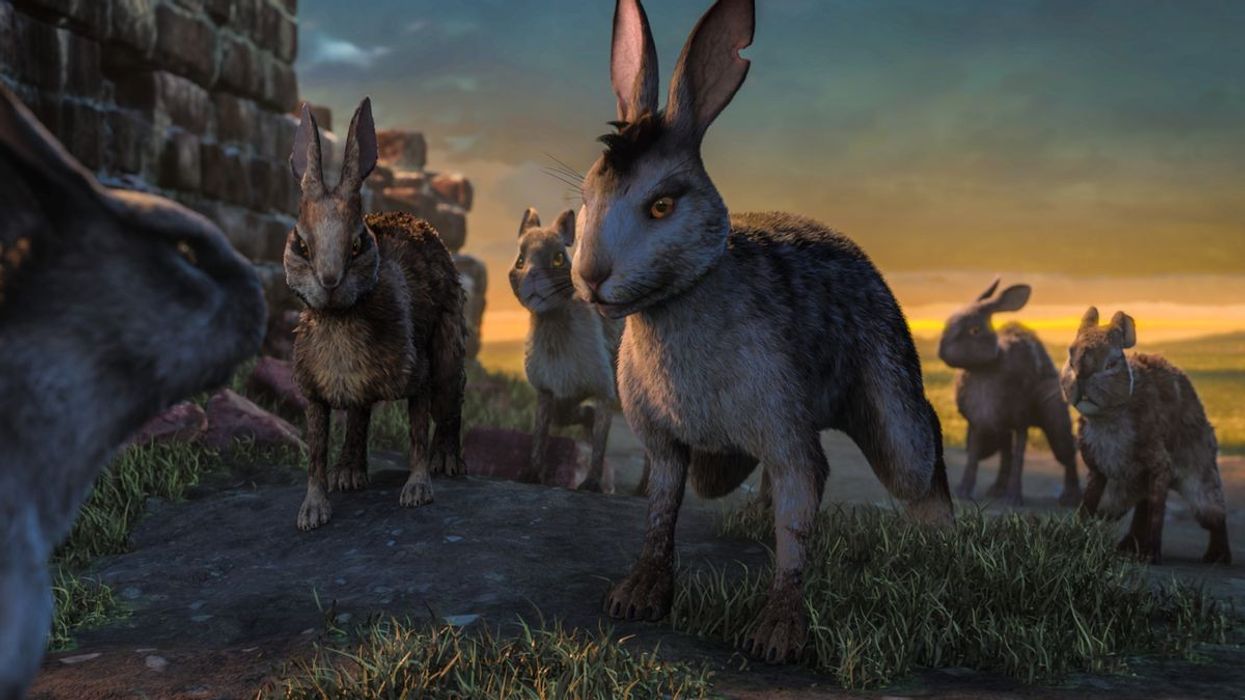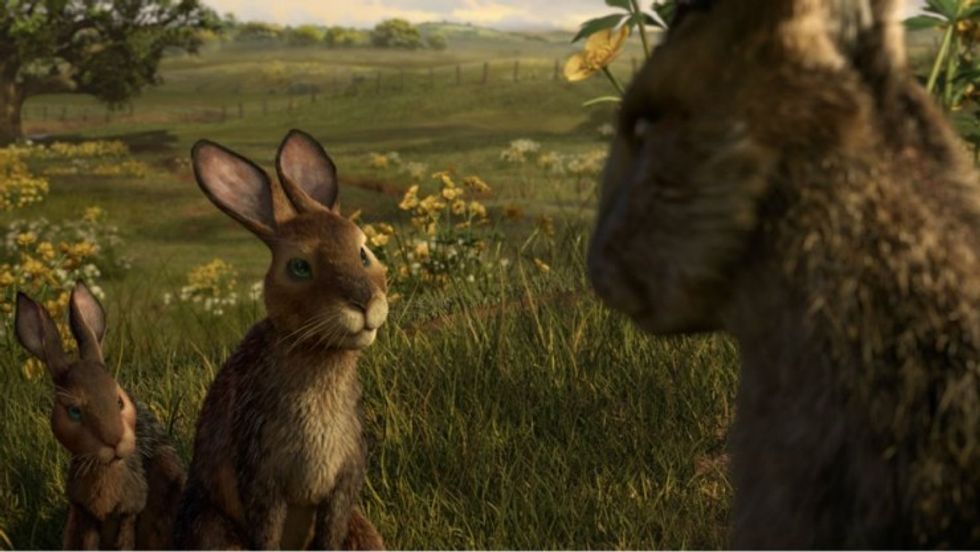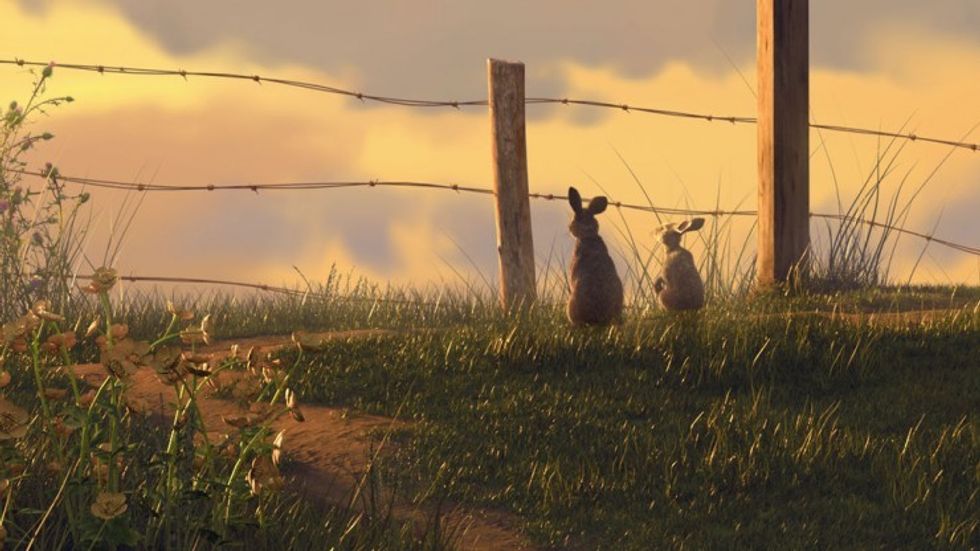'Watership Down' Director Noam Murro on Planning and Executing the Four-Part Netflix Series
The more director Noam Murro bore down on 'Watership Down,' the more universal themes he discovered.

There is a moment not far from the beginning of Watership Down, Richard Adams' remarkable novel recently adapted for Netflix by Noam Murro, that I never get tired of recounting: the Great Burrow episode. A group of rabbits, escaping from their English countryside burrow because it is about to be plowed over by construction, discover a burrow where all the rabbits seem happy, well-fed, and relaxed. They quickly discover (spoiler alert, if you by chance haven't read the book) that the rabbits are well-fed because they're being groomed for slaughter.
There is no greater allegory for modern complacency than that vignette. It's a universal story and a story that bears eternal retelling. Similarly, director Noam Murro has uncovered the timeless elements of the original book to create a remarkable four-part Netflix feature, voiced by James McAvoy, Rosamund Pike, Tom Wilkinson, John Boyega, Olivia Colman, Gemma Arterton, and Ben Kingsley, among many others.
The whole of the series is pristine and near-photographic, but just painted enough so that you would not think you're watching a live-action film. From the very beginning, a creation story told through beautifully drawn puppet figures, Watership Down taps into a feeling of continuous dread and apprehension, in which moments of triumph are always fleeting and danger is pervasive.
It's an action film that could scare the bejesus out of viewers of any age and No Film School talked to Murro ahead of the film's release, about how, exactly, the final version of the mini-series came to be.
No Film School: I guess one place I might start would be with the opening. I'm curious about how you how you made that particular animation sequence, what the steps were.
Noam Murro: I think that the prologue always needed to feel a bit outside the body of the narrative because it’s an origin story. So I felt it was always important to have a sort of biblical historical approach.
NFS: When you did the actual animation itself, what materials were used for that? Was it entirely digital or was it based on models?
Murro: We certainly sketched it quite a bit, but really the intention was to create this sort of puppetry that doesn’t communicate a sense of time when you see it. It's not today, it's not tomorrow, it's not a hundred years old, a thousand years old. It's there, it's biblical, there from the beginning, and I think that really what is at the heart of it. I always thought that Chinese puppetry, or shadow puppetry, if you will, more than anything, served it really well because it conceptualizes the story so that you can relate to it on a mythical level.
NFS: When you were preparing to do the rest of the film, which of course has a very different appearance, what kind of research did you do, into rabbit behavior or rabbit movements?
Murro: Look, there is a lot of preparation when you do a show like this. The foremost preparation is really about understanding the narrative and the depth of the story itself, with its social issues and psychological issues, and then obviously the visual aspects of it, how you interpret them. There are two parts to my answer to your question. One is that we actually went and documented Watership Down itself for every detail. We had drones even fly up above, to get the real understanding of the topography, the type of light, the type of mood, the botanical aspects of it, the topographical aspects of it, the weather patterns. That was researched quite heavily. The second part is that I remember walking, many moons ago, into the Museum of Natural History, and I ended up in the diorama room. And I stopped and stood there for half an hour, and I said, oh my God, this is WatershipDown. And the reason is that when you stand there and you see those windows where it gives you sort of a point of view with natural light, you see that they have a painted backdrop, which has an emotional quality to it, and you move forward until it becomes more and more real. So I think if you look at the show, It's not trying to be photoreal throughout. It shivers on that line between real and dream. That is, it lives on the level of the animals. So I think there is a pure aesthetic that is serviced here. The point was always to find, with the research in my hand, a language, a cinematic language that would service the drama and the story and wouldn't come in between them.
NFS: How did you adapt the location to suit your story?
Murro: We researched everything. I mean, literally, we researched thorns, we researched what they looked like. We looked at where the trees were, where Bigwig actually lived, and where the farm is. There’s actually a farm in Watership Down that very much looks like what we have in the show. The only place we took some liberties, I guess, is Efrafa, which has some totalitarian or fascist aspects to it and again was all inspired by discussions of what could be in that location.
"The foremost preparation is really about understanding the narrative and the depth of the story itself."
NFS: Did you discuss the social and political aspects of the story with the actors prior to filming?
Murro: I think that what makes WatershipDown such an incredibly relevant story is that if you turn on the news today, I think you will see why this story is relevant for us. And there are so many issues to be addressed: social issues and environmental issues between man and animal, man and environment, and inter-animal relationships and they way they relate to each other, and to us. What’s so great about the book is that it has all these allegorical aspects to it but it doesn't wear them on its sleeve. And yes, we did discuss what kind of role each of these characters played in this social dramatic narrative, and also what kind of story in general we were trying to tell.
NFS: I read that you never had all of the actors in the same place, for sort of a read-through, or work-through, and I'm wondering how you kept track of all the different voice tracks for the different parts, and how they were assembled.
Murro: You know, it's always a challenge. This took years to put together, and that's part of the challenge, is to keep that yarn of tone and relationship and performance throughout. All these years, none of the actors ever recorded in the same room at the same time. Ever. And it took a couple of years to really put all these voices together, so really it is a challenge to keep that puzzle in your head. I guess that is part of the directorial challenge, but also don't forget we had an incredible pool of talent here, and then the genius of these people, these artists, is the ability to create those characters in their mind, to actually keep text somewhere in their memory and breathe that throughout. And as you can see, the story gets deeper and more complex, and these characters become more complex, and their relations get more complex. The amazing thing is that's what makes them such good artists, these people, is that they were actually able to create a character, not a voice. It’s important to remember they created a character, and I think sometimes maybe animation doesn't quite go that deep. The idea was not to have a kid’s voice. It had to be all their voices, natural and honest. What made it distinguishable and wonderful is that they created characters.
"The film lives on the level of the animals."
NFS: Which character was the most tricky to cast? Who was the most challenging character to find a voice for?
Murro: In London we were all sitting around the table, and I think I said at some point can you imagine if we get James McAvoy to be Hazel and I remember very quickly afterwards we were all like, yeah right. Like that's gonna happen. The funny thing is, he opened the door to get the first draft of the first episode, and completely by chance he was wearing his old used Watership Down t-shirt. I remember him sending the picture, and going, if this is not a sign, then what is? I think the first one is always kind of difficult. I will give you an example. There was a moment where we had to decide how we do the Black Rabbit, which is really the Death Angel, so to speak. It's always a mystery, in cinema history, that part is always played by a man. And I think at some point I said, why is it always a man? Why can't it be a woman? I was having a conversation with Rosamund Pike and she said, oh my God, yes, you're right. Why is it always a man? I'll do it. The idea was, instead of doing this menacing sort of foreboding character, it should be a welcoming, warm mother.
"All these years, none of the actors ever recorded in the same room at the same time, ever."
NFS: How did the adaptation of the book into a screenplay change over the course of the filmmaking?
Murro: I think that when I bought the rights for the book, there was always the question, "What is the basic architecture, the structure going to be?" I decided to make it into a four-piece mini-series, which is what the book is all about. I mean when you look back, the book is 600 or so pages, you have to give up some things and you have to keep some. It was always the most important thing to keep as close to the text as possible, the heart of the story. I think that Tom, who wrote the script, did a fantastic job of keeping very very close to the book, but there were things that had to change. I'll give you an example. Part of the challenge was to update the women roles in it, to make sure that they became a fierce and important piece of the narrative itself, that they didn’t become secondary characters. That they have a pivotal and crucial part in the way that the story unfolds.













